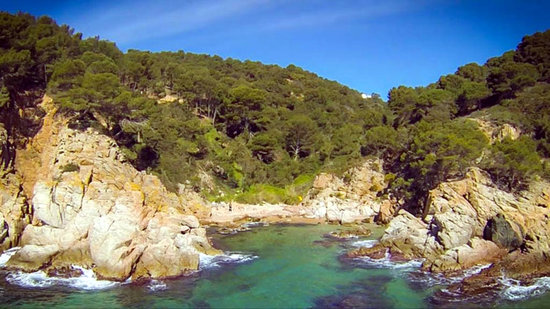The slippery slope of property development on the Costa Brava
Hectares of woodland and dozens of species could be lost following the latest swathe of building projects to supply tourists

At least on the surface, the steep, spiky crags that give the Costa Brava its name shield its landscape – but the beach and woodland planes below have not escaped the pressures of modern urbanization.
A recent surge in development projects right along the northeastern edge of Catalonia is set to convert 1,400 hectares of green space into 35,000 properties.
Most of those will feed the popular tourist sector – and locals are bracing themselves for even more saturation in a region that already receives 20 times more tourists each year than it has residents.
But it’s the long-overlooked environmental threat that has recently started to cut through.
50 species in peril
According to conservation group SOS Costa Brava, 50 animal and plant species could disappear once their leafy inland habitats are lost, including red squirrels and hedgehogs, turtle doves and partridges.
To name two of more than a dozen threatened towns, at Tossa de Mar, properties built to accommodate around 1,500 tourists are being put up on previously untouched cliffs. And up the coast in Begur, 70 hectares of woods is to be cut down to make way for 260 homes and three hotels.
Where the land meets the Mediterranean, at pockets of tiny coves like Cala Morisca near Tossa de Mar, there are fears flora and fauna could be affected.
That’s on top of the controversial extraction of red coral to make jewelry. The precious plants are protected by a European Union directive – but continue to be removed after the Madrid government awarded 12 new licenses while Catalonia was under direct rule.
Economic shake-up
Conservationists are calling for a shake-up of the local economy. "We have enough tourism already, so we have to reconfigure the model a little," said Marta Ball-llosera, a spokesperson for SOS Costa Brava.
"Growth is obviously important. It’s a necessity for the town. But when we have areas where 70% homes are for tourists while young people can't afford to live here, we have to think about what kind of growth."
But businesses emphasize the projects have passed all the right tests.
"We find it hard to understand why projects that the administration has approved only recently would now be stalled or rejected," Josep Maria Coll, president of the Girona developers' association, said.
Motorway by the coast
And – most divisive of all – why build more for tourists if they can’t actually get there?
The C-32 Motorway became Spain’s first-ever motorway when it was completed in 1969, connecting Barcelona and the edge of the Costa Brava.
Now the Catalan government wants to continue trailblazing – extending it right up to the tourist resort of Lloret de Mar, knocking down 200 homes and more woodland.
But activists believe the motorway will destroy the Costa Brava and warn these projects are only the tip of the iceberg.
"If it gets that far, it will never stop," one complained. "The Costa Brava is the Titanic, and these projects are just the visible tip of the iceberg."
For some, it’s a yellow brick road – a symbol of growth and progress for some of the poorest parts of Catalonia. For others, it’s a path to destruction.
The 21st Century conflict between consumption and the coastline – opportunity versus sustainability – has come to Catalonia.